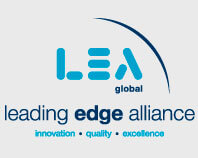The Inflation Reduction Act of 2022 (IRA), signed into law last August, included a wide variety of tax incentives for clean energy. For many individuals, the most relevant provisions in the new law are modifications and enhancements to existing residential energy credits. These credits promote clean energy and energy-efficient upgrades for individuals by providing a dollar-for-dollar offset against income tax liability
The rules for claiming these tax benefits are somewhat complex, so the IRS released a Fact Sheet in December 2022 that summarizes the qualifications for two credits:
- The amended Energy Efficient Home Improvement Credit under Internal Revenue Code Section 25C
- The Residential Clean Energy Property Credit under Internal Revenue Code Section 25D
Fact Sheet 2022-40 sets out the general requirements for each of these credits and provides several FAQs for both individuals and tax professionals.
The Amended Energy Efficient Home Improvement Credit
Previously, the Energy Efficient Home Improvement Credit was subject to a lifetime cap of $500. Under the IRA, qualifying property placed in service between January 1, 2023, and January 1, 2033, is eligible for an annual credit of up to $1,200 with no lifetime limit. The amount of the credit is 30% of the sum of amounts paid for home improvements that meet certain energy efficiency requirements prescribed by the IRS.
The Fact Sheet provides some helpful examples and outlines cost restrictions for several specific home improvement expenditures, including the following:
| Item | Credit Percentage | Maximum Annual Credit |
| Energy Audit | 30% | $150 |
| Exterior Doors | 30% | $250 per door, total limitation of $500 |
| Exterior Windows and Skylights | 30% | $600 |
| Insulation Materials or Systems and Air Sealing Materials or Systems | 30% | No specific limitation |
The Fact Sheet also includes specific information about what constitutes an energy-efficient improvement. For instance, windows and doors must meet Energy Star certification requirements.
The IRS clarified that any energy-efficient home system might qualify for the credit, but each system has an individual limit of $600. These systems include:
- Central air conditioning
- Natural gas, propane or oil water heaters, furnaces and hot water boilers
Finally, the following types of energy efficient property are not subject to a per-item cap, but are subject to an annual total limit of $2,000:
- Electric or natural gas heat pump water heaters (and heat pumps)
- Biomass stoves and biomass boilers
The $2,000 limitation is in addition to the $1,200 limit for other types of property, meaning that in some cases a taxpayer may be able to qualify for up to a $3,200 credit in a given year.
The Residential Clean Energy Property Credit
The Residential Clean Energy Property Credit was extended by the IRA to apply to property placed in service between December 31, 2021, and January 1, 2033. Like the Energy Efficient Home Improvement Credit, the credit amount is 30% of qualifying costs. Property owners may be eligible for the credit if they incur costs for any of the following types of residential energy efficient property:
- Solar panels
- Solar water heaters
- Wind turbines
- Fuel cell property
- Geothermal heat pumps
- Battery storage technology
The Residential Clean Energy Property Credit does not have an upper dollar limit. There are, however, certain restrictions for fuel cell expenditures, with a $500 cap for each half kilowatt of capacity.
To qualify for the credit, residential energy efficient property must meet certain minimum requirements. For example, solar water heating property must be certified for performance by the nonprofit Solar Rating Certification Corporation or a comparable entity endorsed by the state government in which the property is installed.
Both the Energy Efficient Home Improvement Credit and the Residential Clean Energy Property Credit are limited to expenditures for a property used as the taxpayer’s residence. Landlords or other property owners cannot take the credits for a property if they do not live there themselves. However, renters may be able to claim credits for improvements that they pay for on a home they do not own but use as a principal residence.
Using Fact Sheet 2022-40
The Fact Sheet addresses several other details relating to each credit, such as the timing of the credit, whether the credit can apply to labor costs and how long an item must be expected to remain in use to qualify for the credit. If you think that you may qualify for the credit, be sure to keep receipts, certifications, and any other documentation for expenses related to the installation or upgrade. Your tax professional will be able to review these documents to ensure that you meet the qualifications and help you take steps to claim the credit.
Contact Us
If you have any questions or would like additional information, please contact your Bennett Thrasher tax advisor by calling 770.396.2200.




